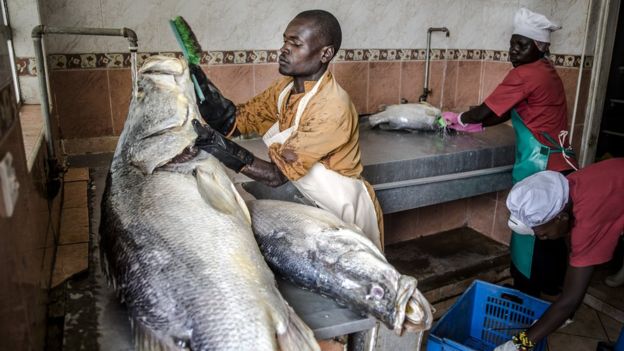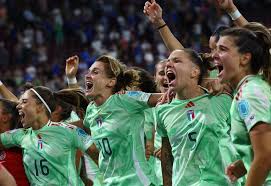Fish leather’s nine times stronger than lamb or cow leather of similar thickness

“The first 200 times we just made smelly fish soups,” Steinunn Gunnsteinsdóttir says.Ms Gunnsteinsdóttir is the sales manager of Icelandic company Atlantic Leather, which owns the only fish tannery in Europe.Overlooking a fjord on Iceland’s remote north coast, since 1994 it has been processing the skins of salmon, perch, cod and wolffish.
The tanning process takes between three and four weeks, and 19 employees now produce 10,000 skins, or nearly a tonne, of fish leather a month.”The fish smell disappears in the early stages, then it smells like any other leather,” adds Ms Gunnsteinsdóttir, who is the daughter of the founders.The company gets all its fish from sustainable stocks, via Icelandic, Norwegian and Faroe Island fishing fleets, and unlike the worst examples in the global cow leather industry its tanning process is as environmentally friendly as possible.
Fish leather is being increasingly used by makers of handbags – such as this example by Italian designer Barbara della Rovere.The operation runs off geothermal energy, which is prevalent in Iceland, and the firm has equipment that enables it to re-use every drop of water between eight and nine times in the production process.Atlantic Leather also uses natural, non-polluting dyes. The price of its leather varies depending on the fish, but the salmon skins sell for $12 (£9) a square foot.
Now supplying top European fashion houses Jimmy Choo, Dior and Ferragamo, Ms Gunnsteinsdóttir says it is a misconception that fish leather must be delicate and easy to tear.”Fish leather’s actually nine times stronger than lamb or cow leather of similar thickness,” she says.
“This is because the fibres in fish skin criss-cross rather than just up and down… it makes it much more durable leather for products that have to be really strong like shoes, belts and bags.”While fish leather currently accounts for less than 1% of total global leather sales, the United Nation’s Food and Agriculture Organization (FAO) is promoting its increasing production as a means to boost the incomes of fishing communities around the world.
“We think fish leather is a way to improve people’s livelihoods in fishing communities without compromising their food security,” says Jackie Alder, who is a senior fisheries industry officer at the FAO’s Fisheries and Aquaculture Department.Increased availability of fish leather could also reduce demand for snake and alligator skins, which may come from endangered species.A rise in the use of fish skins may, in the longer term, also see less need for cow leather.
However, the cow leather industry is intrinsically linked to continuing demand for beef. With the current rate of the world’s beef consumption, hides not turned into leather would instead become an estimated 10 million tonne waste problem per year.Outside of the environmental costs of land clearance and methane emissions involved in cow leather, the industry says it has made efforts in recent years to improve production processes around the world.
Since 2005, the Leather Working Group trade association – whose members include Adidas, Nike and Primark – says it has been promoting environmentally responsible practices. This includes better standards of waste water discharge.Some 8,500km (5,280 miles) away from Iceland, another company now making fish leather is Kenya’s Victorian Foods.
With support from Jackie Alder and her team, the business uses the skins of Nile perch fished from Lake Turkana, the world’s largest desert lake, in the north of the country.Victorian Foods’ chief executive James Ambani says that after three years in operation the company now produces 400kg of leather per week, which sells for $5 a square foot
The leather can be produced in large sizes because the Nile perch is a huge fish that can grown as large as six feet or two metres in length.”It’s created a big impact on the community and new revenue stream for us and local fishermen who now get 30% more for each fish they sell,” says Mr Ambani.His company employs 10 women at the tannery, and is working to train an additional group to manufacture fish leather goods.
The FAO’s Fisheries and Aquaculture Department is also now working with a Brazilian company called Coopescarte to developer easier and cheaper ways of producing fish leather.Fish leather could reduce demand for the skins of crocodiles and snakes.Kenyan fashion designer Deepa Dosaja recently used some of Victorian Foods’ naturally dyed fish leather for the first time.
“It’s high fashion, it’s beautiful and it’s clean – it’s exciting,” she says.





